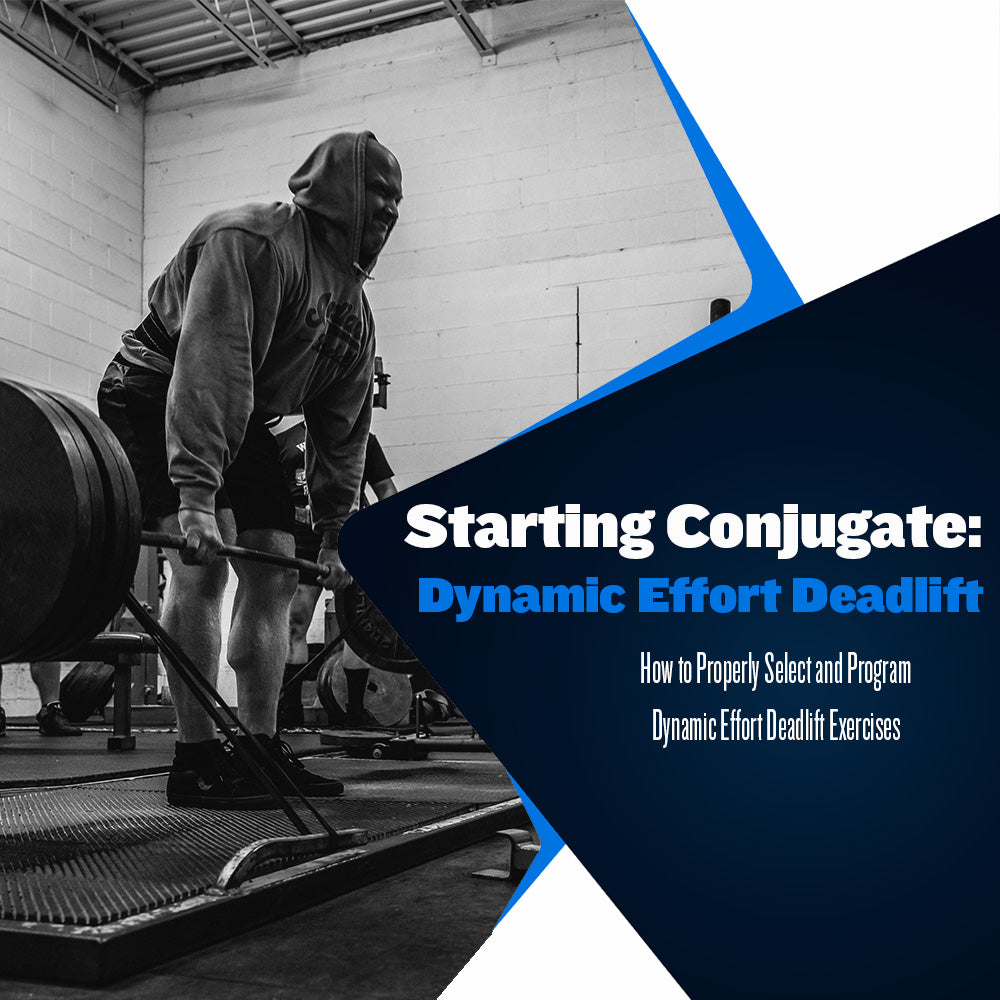Starting Conjugate: Dynamic Effort Deadlift Programming

Proper implementation of the dynamic effort method for lower body training is guaranteed to increase an athlete's rate of force development, enabling the athlete to display significant levels of power on demand. This results in faster bar speeds, improved sprint times, and increased vertical jump ability on the platform and playing field.
No matter what sport you're preparing for, dynamic effort training can take your power output to the next level.
When most think of Westside Barbell dynamic effort training, they think of two exercises; the squat and the bench press. However, we also utilize the dynamic effort method to increase our ability to generate power in the deadlift, focusing on improving our force production and bar speed the same as we would with the squat or bench press.
Previously, I have discussed dynamic effort lower training and how it relates to the squat. This article will discuss the second part of your dynamic lower training; speed deadlifts. Here's some general advice to ensure you get the most out of your dynamic effort deadlifts.
Exercise Selection
The first step when setting up your dynamic effort deadlifts is to select the type of deadlift exercise you want (or need) to use. Many believe our dynamic effort deadlift training is limited to conventional or sumo stance deadlifts versus bands. However, this is not the only exercise we use when performing speed deadlifts.
Here are the preferred deadlift variations we use at Westside for DE deadlifts:
Conventional / Sumo Stance Deadlift
Deficit Deadlift
Rack Pull
As you can see, aside from conventional and sumo stance deadlifts, we utilize deficit deadlifts and rack pulls as well. This leads to the question, which exercise is best? This will depend on your current weaknesses and your current recovery level.
We use the conventional and sumo stance deadlift to do two things: improve an athlete's dominant deadlift form or improve their ability to pull in their non-dominant stance. Deficit deadlifts are used for athletes with hamstring/glute weakness or for those who struggle to get the weight moving off the floor.
The rack pull is used for two reasons: to focus on ROM-specific weaknesses or to give an athlete a break from floor or deficit deadlifts. When incorporating the rack pull as your dynamic effort deadlift, we recommend setting the bar around the mid-shin level to allow the glutes and hamstrings to play a significant part in the lift.
Exercise Programming
Programming your dynamic effort deadlift training is pretty simple. First, remember that you will always perform your dynamic effort deadlifts after you have finished your dynamic effort squat training.
Considering the skill needed to accomplish proper dynamic effort box squats, we do not want to pre-fatigue an athlete with deadlifts before squatting.
If you're asking why that is, it's simple; squatting against bands to a box for 20-25 reps with the proper output takes more skill and energy than deadlifting four to eight total reps. We want to be set up for success every dynamic effort lower training day, so always keep your deadlifts after squats.
Unlike the dynamic effort squats, dynamic effort deadlifts are performed for eight sets or less, each set being performed for one rep. Like dynamic effort squats, we will perform the same deadlift variation over the three-week dynamic effort squat wave. Also, similar to our dynamic squatting, we lower the volume and increase the intensity as the weeks' progress.
Here is an example of an appropriately programmed dynamic effort lower deadlift training wave:
Week 1
Main DE Squat Workout - 12 x 2 @75%
Conventional Stance Speed Deadlift - 8 x 1 @70%
Week 2
Main DE Squat Workout - 10 x 2 @80%
Conventional Stance Speed Deadlift - 6 x 1 @75%
Week 3
Main DE Squat Workout - 8 x 2 @85%
Conventional Stance Speed Deadlift - 4 x 1 @80%
Remember, 25% of each percentage will be made up of band tension when accommodating resistance is used, with the rest of the weight being loaded onto the barbell.
Train With Intent
Like dynamic effort squatting or benching, you must put in the proper amount of effort to get the most out of your dynamic effort deadlifts. Keep in mind that dynamic effort lower training days are typically grueling training days that can leave you feeling tired immediately after your dynamic effort squats.
You must stick to the suggested set, rep, and percentage guidelines above for dynamic effort deadlifting. Failure to do so can result in increased recovery timelines or, worse - injury.
Focus on technical discipline and getting as much speed as possible off the floor with every rep you perform. Dynamic effort deadlifts offer athletes another means of increasing their lower body strength, power, and endurance when implemented and executed correctly.
Keep an eye out for more Starting Conjugate content coming soon.
Sources:
Simmons, L. (2007). Westside Barbell Book of Methods. Westside Barbell.
Verkhoshansky, Y., & Siff, M. C. (2009). Supertraining. Verkhoshansky.




